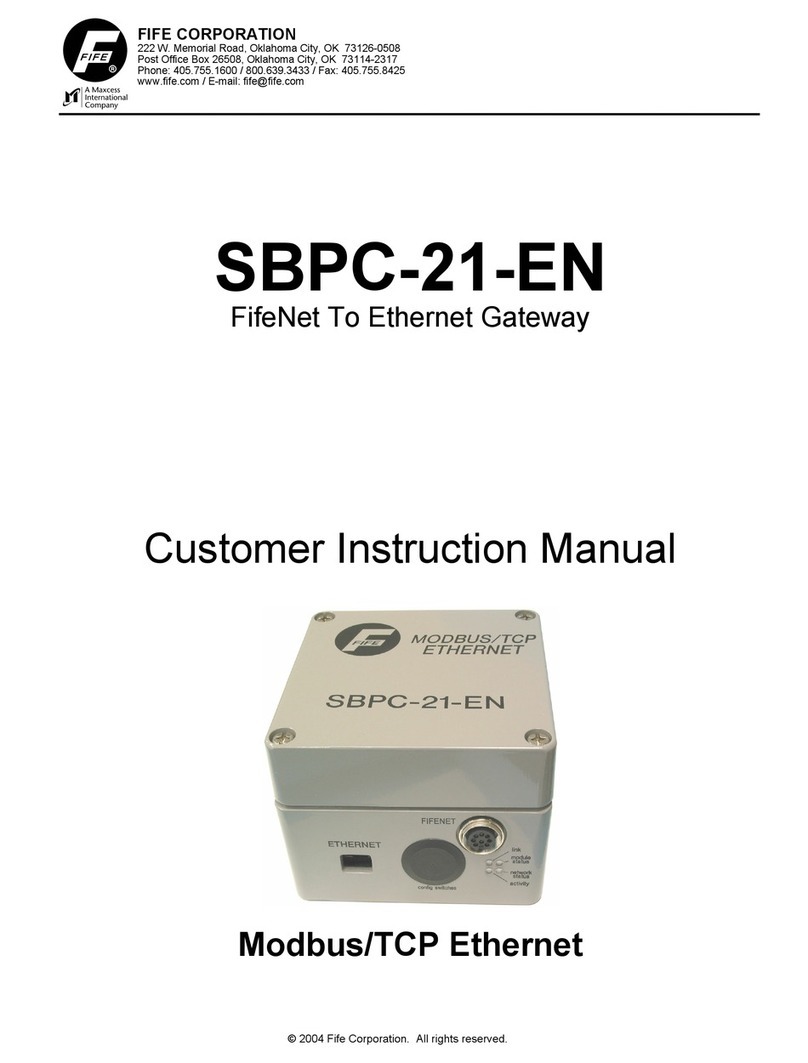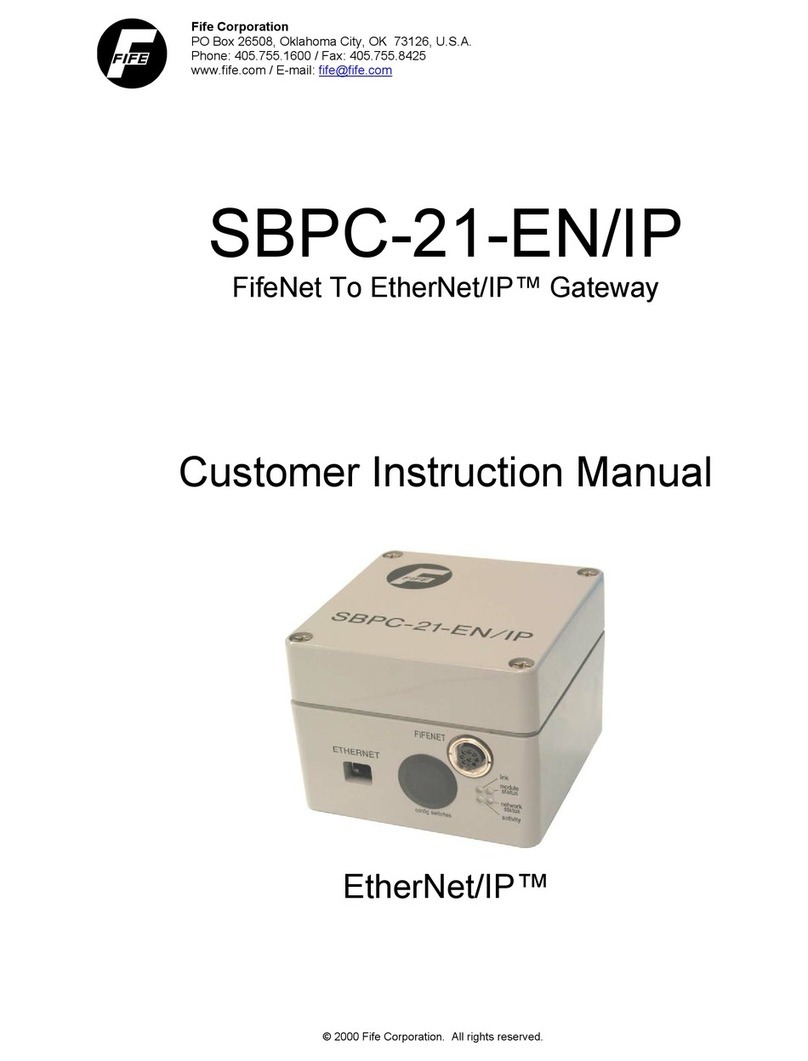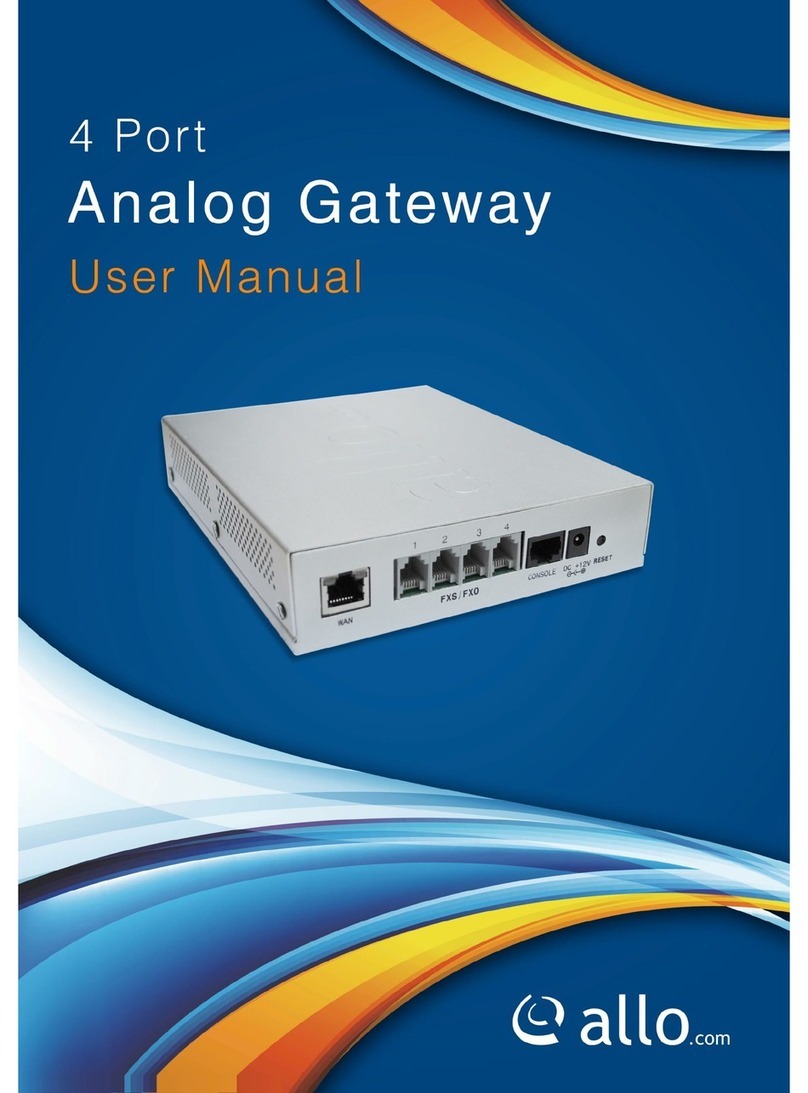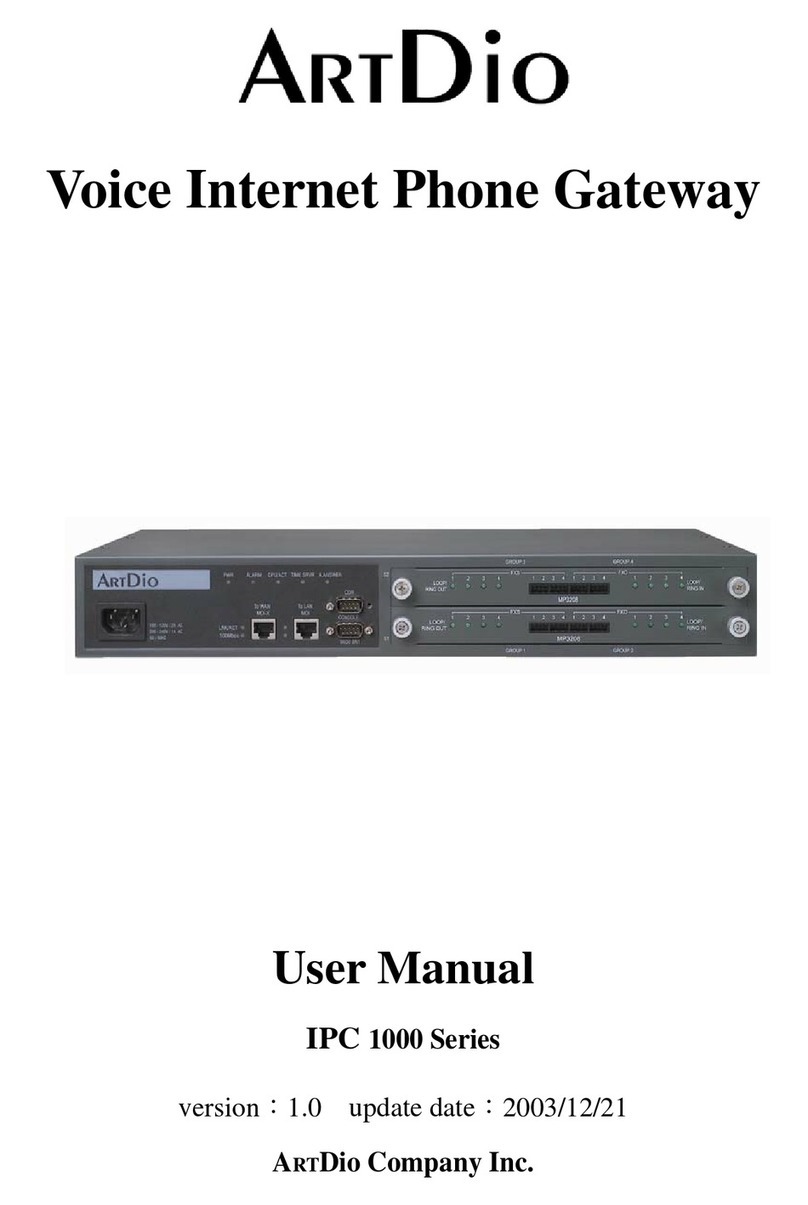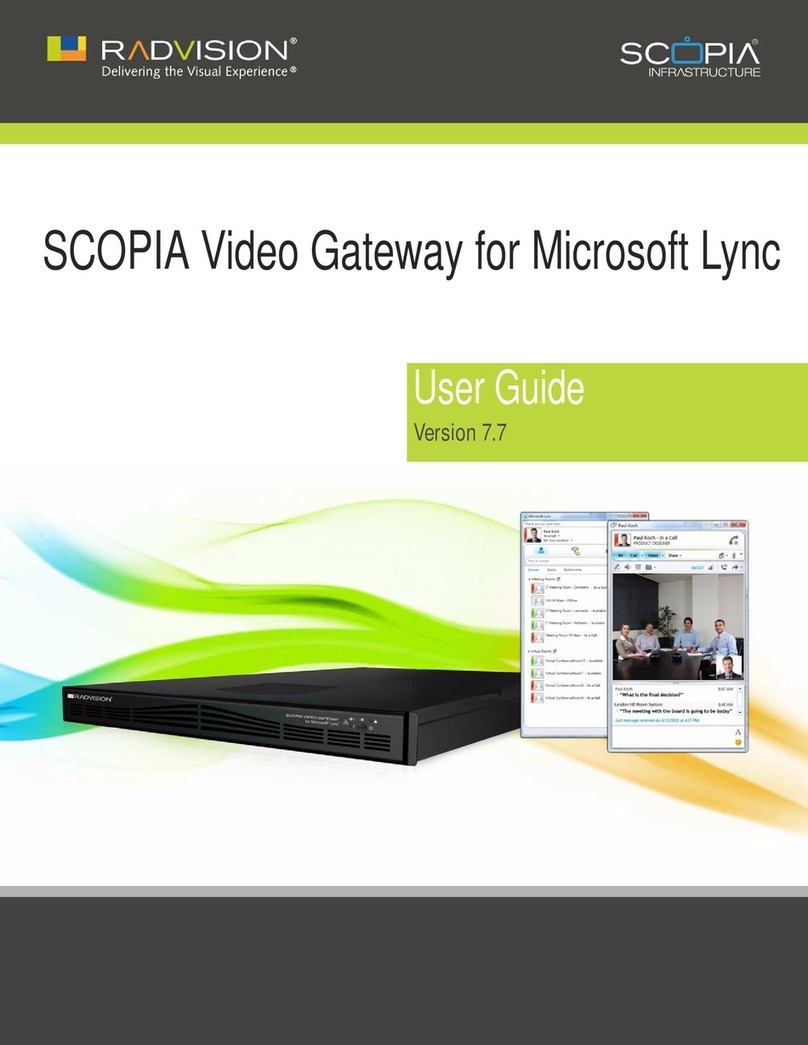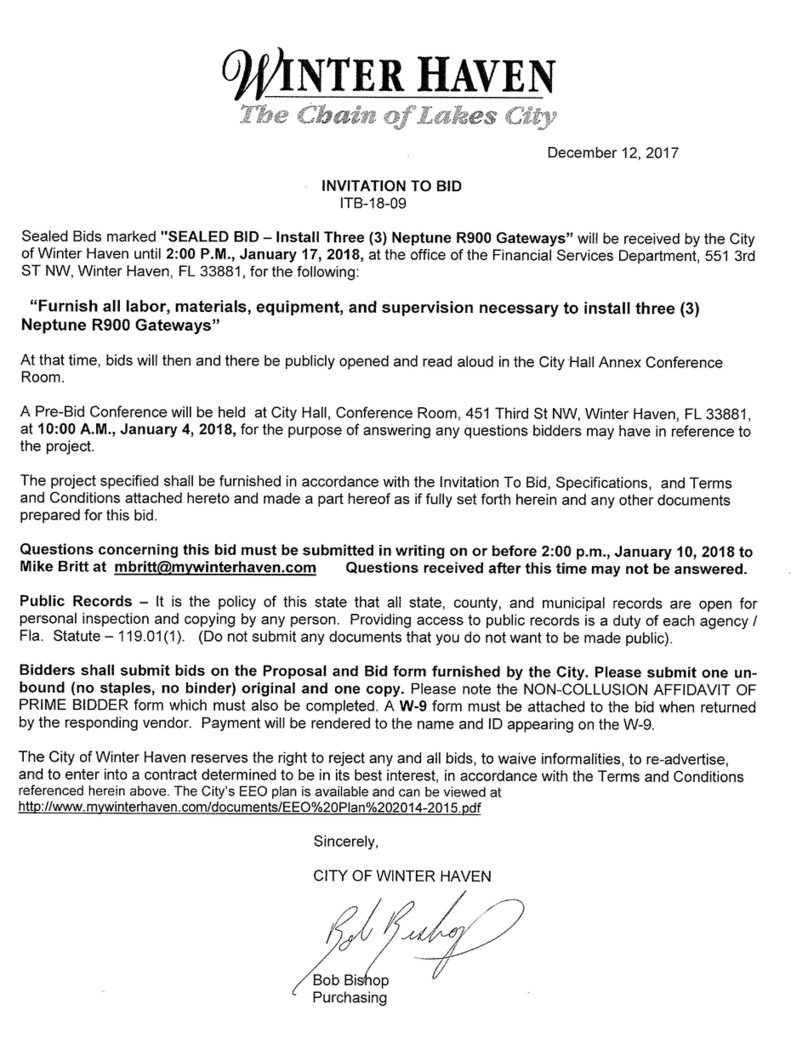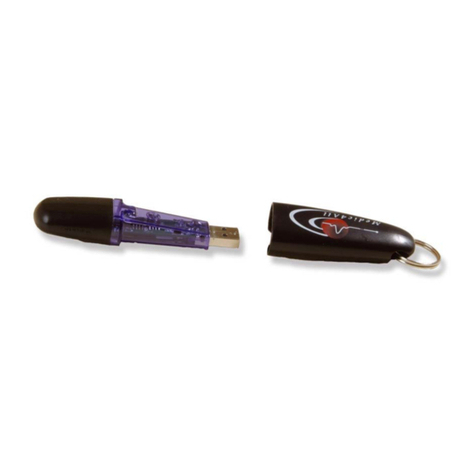Fife SBPC-21-PB PROFIBUS DP User manual

Fife Corporation
PO Box 26508, Oklahoma City, OK 73126, U.S.A.
Phone: 405.755.1600 / Fax: 405.755.8425
© 2002 Fife Corporation. All rights reserved.
SBPC-21-PB
FifeNet to Profibus™Gateway
Customer Instruction Manual
PROFIBUS DP


SBPC-21-PB CUSTOMER INSTRUCTION MANUAL
COPYRIGHT
• • • • • •
All rights reserved. Any reproduction of this Instruction Manual, in any form, in whole or in part,
requires the prior written consent of Fife Corporation.
The information given in this Instruction Manual is subject to change without notice.
We have compiled this Instruction Manual with the greatest possible care and attention. However, the
possibility of error cannot be completely excluded. Fife Corporation accepts no legal liability for
incorrect information given and the consequences arising therefrom.
AnyBus is a registered trademark of HMS Industrial Networks AB.
All other trademarks are the property of their respective holders.


SBPC-21-PB CUSTOMER INSTRUCTION MANUAL
TABLE OF CONTENTS
• • • • • •
GENERAL INFORMATION ............................................................................................................................1
Introduction ..............................................................................................................................................1
Profibus DP Overview..............................................................................................................................1
Producer/Consumer Model......................................................................................................................3
FifeNet .....................................................................................................................................................3
SBPC-21-PB Switch/Jumper Configuration.............................................................................................4
SBPC-21-PB External Connections/Switches/Indicators.........................................................................5
Profibus DP Baud Rate............................................................................................................................5
SBPC-21-PB Network Status ..................................................................................................................6
SBPC-21-PB Error Codes .......................................................................................................................7
FIFENET THEORY ......................................................................................................................................9
FifeNet Time Slices..................................................................................................................................9
Multiplexed Time Slices ...........................................................................................................................9
FifeNet Master .......................................................................................................................................10
SBPC-21-PB Data Flow.........................................................................................................................10
CONFIGURATIONS....................................................................................................................................13
Hardware Configuration - Single CDP-01..............................................................................................13
Hardware Configuration - Multiple CDP-01’s.........................................................................................14
Software Configuration ..........................................................................................................................14
GSD File ................................................................................................................................................14
COMMUNICATION MAPPING......................................................................................................................15
Profibus to FifeNet Data ........................................................................................................................15
FifeNet to Profibus Data ........................................................................................................................16
CONTROL INFORMATION ..........................................................................................................................19
CDP-01 Control Matrix...........................................................................................................................19
External Lock .........................................................................................................................................19
Status Data Block ..................................................................................................................................22
SPECIAL CONTROL OF FIFENET DEVICES.................................................................................................29
CDP-01 Key Code Data Path ................................................................................................................29
CDP-01 Key Codes ...............................................................................................................................30
Simulating Dual-Key Presses ................................................................................................................30
CDP-01 LED Panel Data .......................................................................................................................31
INDEX......................................................................................................................................................33


SBPC-21-PB CUSTOMER INSTRUCTION MANUAL
________________________________________________________________________________________________________________
12-20-2002 Figure Sheet 1-851-A Page 1
1
GENERAL INFORMATION
• • • • • •
Introduction
The Fife SBPC-21-PB (Serial Bus Protocol Converter) provides a gateway between Fife’s proprietary
FifeNet network and Profibus™. Using the SBPC-21-PB, data originating from FifeNet can be sent on
Profibus and data from Profibus can be sent to FifeNet.
Profibus DP Overview
The supported media for the SBPC-21-PB Profibus is a shielded copper cable consisting of a twisted
pair. The baud rate for the bus is between 9.6K baud to a maximum 12M baud. The Profibus DP
network is able to carry 126 nodes and the total amount of data for Profibus DP is 244 bytes out per
module and 244 bytes in per module. Node 126 is only used for commissioning purposes and should
not be used to exchange user data. An example of a Profibus network with an SBPC-21-PB is shown
in the diagram below.
Figure 1-2: Example of an SBPC-21-PB Network Connection
Profibus DP
Slave #2
Profibus DP
Master
Profibus DP
Slave #3
Profibus DP
Slave #1
The SBPC-21-PB connects
to both FifeNet and Profibus
providing translation between
two networks.
Profibus
FifeNet
RS-232

________________________________________________________________________________________________________________
12-20-2002 Figure Sheet 1-851-A Page 2
Table 1-1: Technical Features for Profibus DP
SUMMARY OF PROFIBUS DP TECHNICAL FEATURES
Transmission Technique:
Profibus DIN 19245, Part 1
• EIA RS 485 twisted pair cable or fiber optic.
• 9.6 kbit/s up to 12 Mbit/s, maximum distance 200m at 1.5 Mbit/s extendible with
repeaters.
Medium Access: Hybrid medium access
protocol according to DIN 19245, Part 1
• Monomaster or multimaster systems supported.
• Master and slave devices, maximum 126 stations possible.
Communications: Peer-to-Peer (User Data
Transfer)
or Multicast (Synchronization)
• Cyclic master slave transfer and acyclic master-master data transfer.
Operation Modes
• Operate: cyclic transfer of input and output data.
• Clear: inputs are read and outputs are cleared.
• Stop: only master-master functions are possible.
Synchronization: Enables synchronization of
the inputs and/or outputs of all DP slaves.
• Sync-Mode: Outputs are synchronized.
• Freeze-Mode: Inputs are synchronized.
Functionality
• Cyclic user data transfer between DP-Master(s) and DP Slave(s).
• Activation or deactivation of individual DP Slaves.
• Checking of the configuration of the DP Slaves.
• Powerful diagnosis mechanisms, 3 hierarchical levels of the diagnosis messages.
• Synchronization of inputs and/or outputs.
• Address assignments for the DP-Slaves over the bus with Master Class 2.
• Configuration of the DP-Master (DPM1) over the bus.
• Maximum 244 bytes input and output data per DP Slave, typical 32 bytes.
Security and Protection Mechanisms
• All messages are transmitted with Hamming Distance HD=4
• Watchdog timer at the DP slaves.
• Access protection for the inputs/outputs at the DP slaves.
• Data transfer monitoring with configurable timer DP Master (DPM1).
Cabling and Installation • Connecting or disconnecting of stations without affecting of other stations.

________________________________________________________________________________________________________________
12-20-2002 Figure Sheet 1-851-A Page 3
PROTOCOL AND SUPPORTED FEATURES
Fieldbus Type PROFIBUS-DP EN 50 170 (DIN 19245)
Protocol Version Version 1.10
Protocol Stack Supplier Siemens
Auto Baud Rate Detection Supported Baud Rate Range: 9.6 kbit to 12Mbit
PHYSICAL INTERFACE
Transmission Media Profibus Bus Line, Type A or B Specified in EN 50170
Topology Master-Slave Communication
Fieldbus Connector 9-Pin Female DSUB
Cable Shielded Copper Cable, Twisted Pair
Isolation The bus is galvanically separated from the other electronics with an on-board DC/DC
converter. Bus signals (A-line and B-line) are isolated via optocouplers.
Profibus DP Ccommunication IC SPC3 Chip from Siemens
Producer/Consumer Model
The Producer/Consumer Model allows the exchange of information between a sending device
(“producer”) and many receiving devices (“consumer”) without requiring the same data to be sent
multiple times to different destinations. The producer sends the data once and each consumer on the
network receives the data at the same time. The data can be used (“consumed”) or ignored by each
receiving device independently. FifeNet uses the Producer/Consumer Model.
FifeNet
FifeNet’s deployment of the Producer/Consumer Model allows data sent by a single device to be
received simultaneously by multiple devices on the same network. Each receiving device can choose
to use (“consume”) the information or ignore it as its needs dictate. FifeNet is based on a fixed time
slicing architecture where transmitting devices send data in fixed, predetermined time intervals.

________________________________________________________________________________________________________________
12-20-2002 Figure Sheet 1-851-A Page 4
SBPC-21-PB Switch/Jumper Configuration
Since the SBPC-21-PB participates in two networks at the same time, it must have two network
addresses (a FifeNet address and a Profibus node address). The FifeNet address is set via the
FifeNet serial port, which is common with many FifeNet peripherals. The Profibus master sets the
baud rate for the Profibus network. If the SBPC-21-PB is installed as the end point in a FifeNet
network, the jumpers shown below should be installed to provide network termination.
Figure 2-2: SBPC-21-PB Top View
These jumpers should be installed if the
SBPC-21-PB is at the end of a FifeNet
network. They provide network
termination. The other two jumpers
should always be installed as they
select half-duplex FifeNet
communication.
Terminated Not Terminated
The 7-segment LED is
used to display errors or
exceptions. During normal
operation, the display will
continuously “cycle” the
outer segments.
Profibus node address switches.
See the following page for
description of these switches.
Profibus Termination
The end nodes in a Profibus DP network must be
terminated to avoid reflections on the bus line. To
accomplish this, the Profibus DP module is equipped
with a termination switch. If the module is used as the
first or last module in a network, the termination switch
must be in the ON position. Otherwise, the switch
must be in the OFF position. If an external termination
connector is used, the switch must be in the OFF
position.
The termination dip switch can only be accessed with
the SBPC-21-PB top cover removed. To enable
termination, the switch must be in the OFF position.
Termination Switch Position
OFF Up toward top cover.
ON Down toward circuit board.

________________________________________________________________________________________________________________
12-20-2002 Figure Sheet 1-851-A Page 5
SBPC-21-PB External Connections/Switches/Indicators
SBPC-21-PB mounting considerations are simplified as all connections to the SBPC-21-PB are on the
same side of the box. The node address and rotary switches are accessible after removal of the plastic
hole plugs which should be reinstalled after configuration is completed.
Figure 1-3: SBPC-21-PB Side View
Profibus DP Baud Rate
The baud rate on a Profibus DP network is set during configuration of the master. Only one baud rate
is possible in a Profibus DP installation. The SBPC-21-PB uses auto baud rate detection so the user
does not have to configure the baud rate. Baud rates supported are:
• 9.6 kbit/s • 187.5 kbit/s • 3 Mbit/s
• 19.2 kbit/s • 500 kbit/s • 6 Mbit/s
• 93.75 kbit/s • 1.5 Mbit/s • 12 Mbit/s
Connection to FifeNet is
accomplished using the
standard FifeNet
connector. Configuration
is also downloaded using
this connection.
LED indicators provide
feedback for network
troubleshooting.
The Profibus Node address is set using these
rotary switches. This enables address settings
from 1-99 in decimal format. The left switch
sets the most significant digit and the right
switch sets the least significant digit. The node
address cannot be changed during operation.
D-SUB Connector
Pin Name Signal
Housing Shield Connected to PE.
1 Not connected
2 Not connected
3 B-Line Positive RXD/TXD
4 RTS Request to Send1
5 GND BUS Isolated GND from RS-485 side1.
6 +5V BUS Isolated +5VDC from RS-485
side31.
7 Not connected
8 A-Line Positive RXD/TXD
9 Not connected
1+5V Bus and GND Bus are used for bus termination. Some
devices, like optical transceivers (RS485 to fiber optics), might
require external power from these pins. RTS is used in some
equipment to determine the direction of transmission. In normal
applications only A-Line, B-Line, and Shield are used.

________________________________________________________________________________________________________________
12-20-2002 Figure Sheet 1-851-A Page 6
SBPC-21-PB Network Status
The SBPC-21-PB network status is determined by interpretation of the external LED status indicators
as described below.
Figure 1-4: SBPC-21-PB LED Indicators
Table 1-1
ONLINE
LED State Meaning
Green
Indicates that the module is
ONLINE and data exchange is
possible.
Off Module is not ONLINE
OFFLINE
LED State Meaning
Red
Indicates that the module is
OFFLINE and no data exchange is
possible.
Off Module is ONLINE.
FAULTS
LED State Meaning
Off No faults present.
Flashing Red (1 Hz)
Error in configuration: IN and/or
OUT length set during initialization
of the module is not equal to the
length set during configuration of the
network.
Flashing Red (2 Hz)
Error in user parameter data: The
length/contents of the user
parameter data set during
initialization of the module is not
equal to the length/contents set
during configuration of the network.
Flashing Red (4 Hz) Error in initialization of the Profibus
communication ASIC.

________________________________________________________________________________________________________________
12-20-2002 Figure Sheet 1-851-A Page 7
SBPC-21-PB Error Codes
The 7-segment LED digit on the SBPC-21-PB main board is used to indicate errors or other potential
problems. See page 2 of this manual for the location of this LED. The error codes are divided into the
categories listed below. Since there is only a single-digit display and the error codes are 3 digits in
length, the error codes are displayed in three parts. The most significant digit will appear first followed
by the second and third digits. The display will go blank for a moment and the cycle repeats unless the
SBPC-21-PB has been configured to attempt to restart after an error. If this is the case, the error will
only cycle once. All state machine errors 5XX are considered nonfatal and only cycle once. Below are
the error codes and their meanings:
Table 1-2
SBPC PROCESSOR ERRORS
F01 Processor attempted to execute and undefined instruction.
F02 Software interrupt vector occurred.
F03 Attempt to fetch instruction from invalid memory.
F04 Attempt to read data from invalid memory.
F05 Reserved exception vector.
F06 FLASH memory checksum fault.
F07 Pool memory allocation error.
F08 Byte memory allocation error.
F09 Unable to create thread.
F0A Unable to create event.
F0B Unable to create semaphore.
F0C Unable to create mutex.
F0D Unable to create queue.
F0E Unable to write to queue.
F0F Console I/O error.
Errors that begin with ‘F’
are unrecoverable faults.
The SBPC cannot
participate in FifeNet or
Profibus operations. In
the default configuration
the SBPC will attempt to
restart.
COMMUNICATION MODULE ERRORS
E01 The configuration matrix is corrupted.
E02 No HMS Anybus module detected.
E03 Anybus module failed to initialize (no interrupt received).
E04 Anybus module failed to initialize (interrupt stuck).
E05 Anybus module failed to initialize (mailbox not ready).
E06 Anybus mailbox timeout.
E07 Anybus mailbox response indicated error.
E08 Anybus mailbox response timeout.
E09 Anybus dual-port RAM fault.
E0A Anybus output area release timeout.
E0B Anybus initialization timeout.
Errors that begin with ‘E’
are associated with the
Profibus interface. In the
default configuration, the
SBPC will attempt to
restart. With the
exception of error ‘E01,’
FifeNet is functional;
however, the default
configuration will attempt
to restart which will
interrupt FifeNet.
STATE MACHINE ERRORS
501 State machine file is corrupted.
502 State machine is disabled.
503 State machine started in shutdown mode.
504 Bad state machine instruction encountered.
505 State machine instruction fetch from address is out of range.
506 State machine stack error (too many nested calls).
507 State machine stack error (too many returns).
508 State machine attempted divide by zero.
509 State machine tried to access more than four timers.
50A State machine variable address is out of range.
Errors that begin with ‘5’
are related to the state
machine capability of the
SBPC. These errors are
cycled only once and do
not cause the SBPC to
restart.

________________________________________________________________________________________________________________
12-20-2002 Figure Sheet 1-851-A Page 8

SBPC-21-PB CUSTOMER INSTRUCTION MANUAL
________________________________________________________________________________________________________________
12-20-2002 Figure Sheet 1-851-A Page 9
2
FIFENET THEORY
• • • • • •
FifeNet Time Slices
Data on FifeNet is divided into time intervals called time slices. The FifeNet protocol runs in fixed
repeating cycles. Each time slice can transmit a single 16-bit value. All time slice values are updated
every cycle.
Multiplexed Time Slices
FifeNet devices can send a single 16-bit value in one or more time slices. This is acceptable for
values that require high performance such as guiding. The penalty for this performance is the usage
of one time slice per value sent. With limited time slices available, network bandwidth can be
consumed quickly. If some variables are not needed at a high rate, FifeNet offers a way to “multiplex”
a single time slice to carry multiple data words. There are two multiplex options available in the
CDP-01 permitting a single time slice to carry 16 words or 64 words. Multiplexing works by inserting
the specified data words in a sequential repeating cycle. The receiving SBPC-21-PB synchronizes
with the multiplexed data to extract it. This method trades data update speed for higher data quantities
(up to 64 words per time slice). Any combination of real-time or multiplexed data can exist on FifeNet.
Figure 2-1: Multiplexed Data Time Slices
T0 T1 T2 T3
−−−−−−−−−−−−−−−−−− −−−−−−−−−−−−−−−−−− −−−−−−−−−−−−−−−−−− −−−−−−−−−−−−−−−−−−
D1 D5 D1 D5 D1 D5 D1 D5
D1 ACTIVITY
D1 is real-time. This data
is updated every cycle.
D5 ACTIVITY
Tn TS Contents
T0 - Edge Right Sensor
T1 - Line Edge Sensor
T2 - CDP Key Pressed
T3 - Status Register Common
T4 - Drive 1 Mode
T5 - Drive 1 Sensor Mode
T6 - Drive 1 Encoder
T7 - Drive 1 Status Reg 0
T8 - Drive 2 Mode
T9 - Drive 2 Sensor Mode
T10 - Drive 2 Encoder
T11 - Drive 2 Status Reg 0
T12 - Drive 3 Mode
T13 - Drive 3 Sensor Mode
T14 - Drive 3 Encoder
T15 - Drive 3 Status Reg 0
MULTIPLEXING
D5 is multiplexed or switched to a
different variable every cycle.
After the last variable is sent, the
process repeats continuously.

________________________________________________________________________________________________________________
12-20-2002 Figure Sheet 1-851-A Page 10
In the example diagram (Figure 2-1), there is real-time data on D1 and 16 multiplexed data words on
D5. D1 contains the Edge Left Sensor value from a CDP-01. D5 is used to send 16 different values
from the CDP-01. For the real-time value, the CDP-01 sends the Edge Left Sensor value in D1 every
cycle. For the multiplexed time slice, the CDP-01 sends the Edge Right Sensor value in D5 during
time T0. During time T1, D5 contains the Line Edge Sensor value.
As you can see in the example on the previous page, 17 values are being sent over FifeNet, but only
two time slices of network bandwidth are used. The 16 values in time slice 5 are updated at a slower
rate than the value in time slice 1. The application dictates which method should be implemented.
FifeNet Master
The FifeNet protocol uses the time slice architecture described previously for configurable network
traffic. Without some synchronization, however, neither the SBPC-21-PB, nor the CDP-01, would
know where the time slice boundaries were located. This would create problems when they are trying
to send and receive data. This is one of the primary functions of the FifeNet Master, in this case, that
would be the SBPC-21-PB.
SBPC-21-PB Data Flow
In order to effectively connect two dissimilar networks, some means must be provided to collect the
data from each network and exchange it in a controlled manner so that no partial or incomplete data is
sent on either network. This is accomplished by using a block of memory in the SBPC-21-PB to
reassemble FifeNet time slice data and then, when it is complete, transfer it to the Profibus buffers for
transmission on Profibus. Keep in mind that the gateway has to be bidirectional so this process works
the same way for data traveling from Profibus to FifeNet. The diagram below shows the process:
Figure 2-2: SBPC-21-PB Data Flow Block Diagram
The time slice
buffers hold
the raw time
slice data.
This matrix is used to
connect Profibus
data to any memory
buffer location.
The memory array
is used to assemble
and hold data
passing through the
gateway.
This matrix is used
to connect any time
slice to any memory
buffer location.
Profibus data is
placed here for
transmission. FifeNet
transmit data is read
from here and sent to
FifeNet.
M
A
T
R
I
X
M
A
T
R
I
X
Profibus
Data
FifeNet
D1
D2
D3
•
•
•
•
•
•
•
•

________________________________________________________________________________________________________________
12-20-2002 Figure Sheet 1-851-A Page 11
As you can see in Figure 2-2, each time slice has enough memory to store 64 16-bit data words. This
is the maximum amount of data that appears on a FifeNet multiplexed time slice. These data words
are referenced by their order of reception in the multiplexed sequence with DW0 being first and DW63
being last. When the time slice is used in the real-time mode, only the first location DW0 in the
memory array is used. Multiplexed modes 4, 8, and 16 each use 4, 8, and 16 words of memory,
respectively.

________________________________________________________________________________________________________________
12-20-2002 Figure Sheet 1-851-A Page 12

SBPC-21-PB CUSTOMER INSTRUCTION MANUAL
________________________________________________________________________________________________________________
12-20-2002 Figure Sheet 1-851-A Page 13
3
CONFIGURATIONS
• • • • • •
Hardware Configuration - Single CDP-01
The SBPC-21-PB connection diagram is shown below. As you can see, this allows a single CDP-01 at
FifeNet address 1 and an SBPC-21-PB at FifeNet address 10. The SBPC-21-PB default Profibus
node address is 2, but can be easily changed using the rotary switches in the SBPC-21-PB.
Figure 3-1: SBPC-21-PB Network Connection With Single CDP-01
FifeNet
FifeNet Master
A
ddress 10
FifeNet
A
ddress 1
SBPC-21-PB to
CDP-01 Cable:
Fife P/N 68554-001
Profibus Node
A
ddress 2
Profibus Network

________________________________________________________________________________________________________________
12-20-2002 Figure Sheet 1-851-A Page 14
Hardware Configuration - Multiple CDP-01’s
In the network below, the default SBPC-21-PB configuration is used multiple times to provide control to
multiple CDP-01’s. Each SBPC-21-PB is connected to a single CDP-01 creating a separate FifeNet
network for each CDP-01. Each SBPC-21-PB appears as both a FifeNet node and a Profibus node.
Notice the SBPC-21-PB Profibus address must be different for each SBPC-21-PB. The Profibus
address is set by rotary switches accessible via holes in the connector side of the SBPC-21-PB.
Figure 3-2: SBPC-21-PB Network Connection With Multiple CDP-01’s
Software Configuration
Configurations have been created to match the single CDP-01 network shown in Figure 3-1. Since the
CDP-01 can have one, two, or three drives, a configuration has been created to match the parameters
present in each drive configuration. This prevents inefficient use of Profibus bandwidth for data that is
inapplicable. The three configurations are:
Table 3-1
CONFIGURATION
SBPC-21-PB
MATRIX
CDP-01
MATRIX
SBPC-21-PB Default Matrix for use with Single-Drive CDP-01 100410-02X 100246-02X
SBPC-21-PB Default Matrix for use with Dual-Drive CDP-01 100411-02X 100247-02X
SBPC-21-PB Default Matrix for use with Triple-Drive CDP-01 100412-02X 100248-02X
GSD File
A GSD file is provided with the SBPC-21-PB. Use this file when adding a new Profibus node to the network and
it will automatically set up the configuration for that network node. The table below indicates the quantity of data
transferred for single-, dual-, and triple-drive configurations.
SINGLE-
DRIVE
DUAL-
DRIVE
TRIPLE-
DRIVE
Field Size Size Size Bit
Input 20 26 32 (16-bit)
Output 7 7 7 (16-bit)
FifeNet
FifeNet Master
A
ddress 10
FifeNet
A
ddress 1
SBPC-21-PB to
CDP-01 Cable:
Fife P/N 68554-001
Profibus
A
ddress 3
FifeNet Master
A
ddress 10
FifeNet
A
ddress 1
Profibus Network
Table of contents
Other Fife Gateway manuals
Popular Gateway manuals by other brands

ZyXEL Communications
ZyXEL Communications Prestige 660W Series user guide
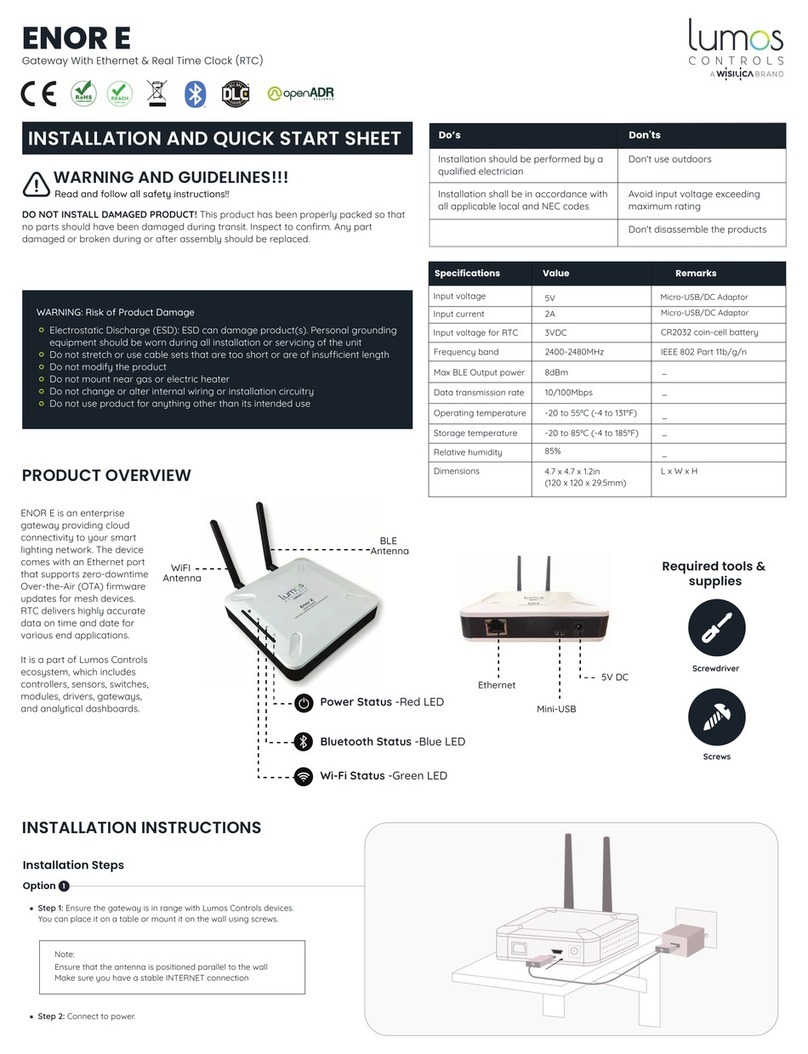
WiSilica
WiSilica lumos CONTROLS ENOR E quick start guide
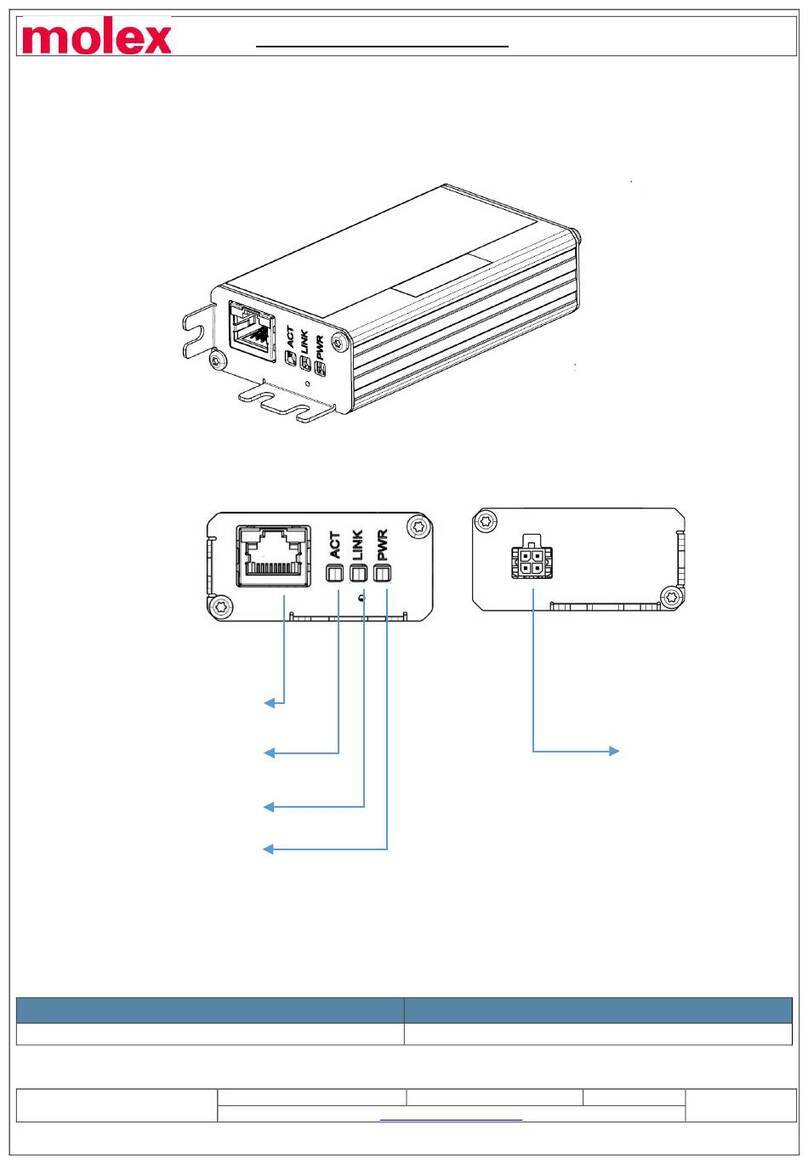
molex
molex CORESYNC installation instructions
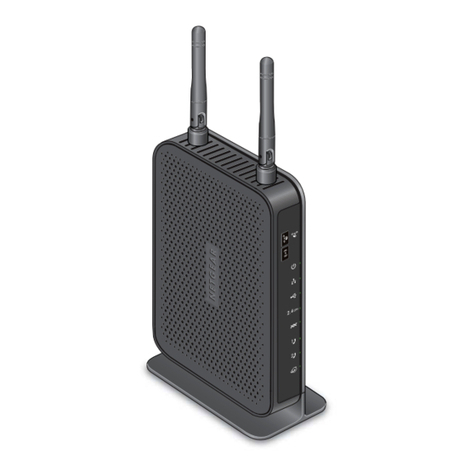
NETGEAR
NETGEAR VEVG2660-1TKSAS user manual
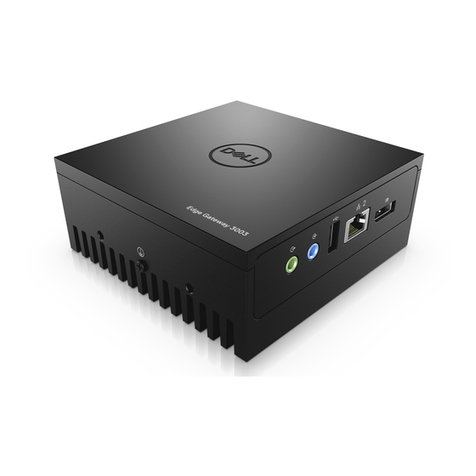
Dell
Dell Edge Gateway 3003 Installation and operation manual
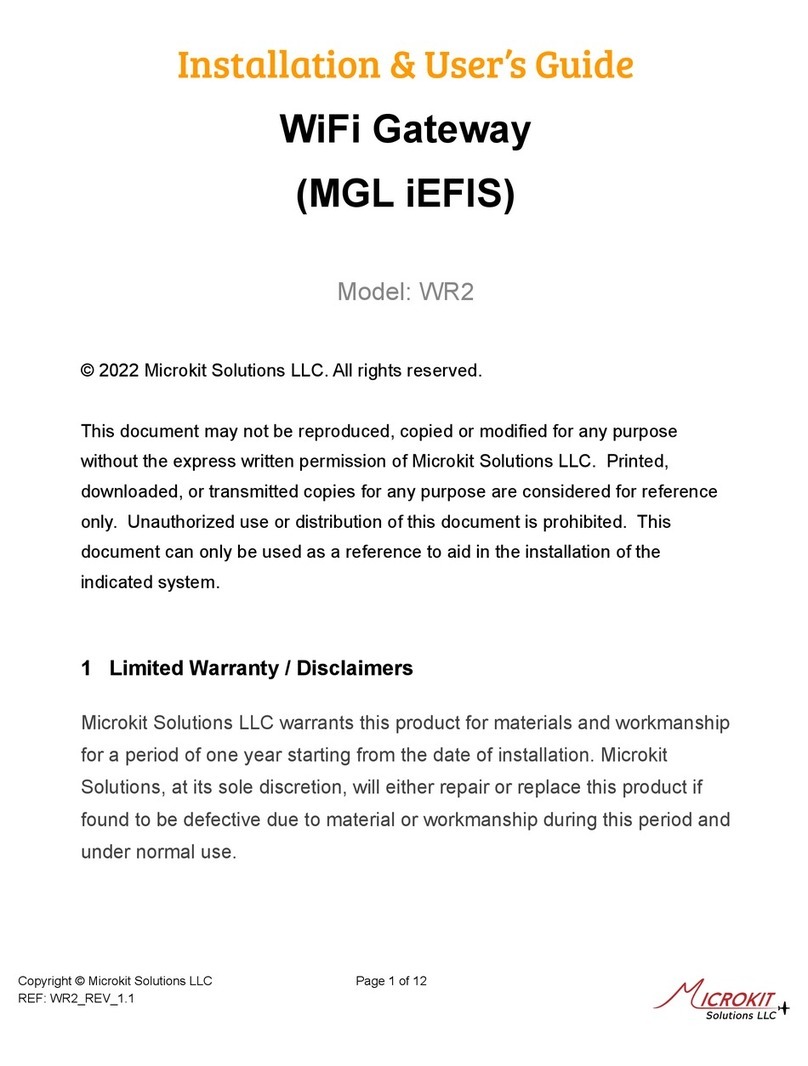
Microkit Solutions
Microkit Solutions WR2 Installation & user guide
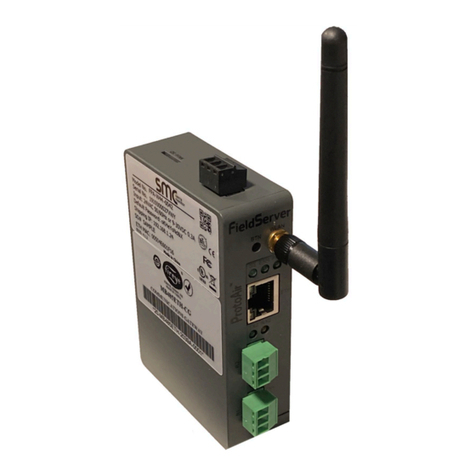
Fireye
Fireye MB485ETH-CG Installation and operation
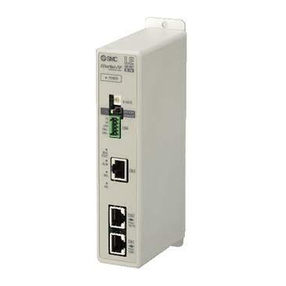
SMC Networks
SMC Networks LEC-GEN1 Operation manual
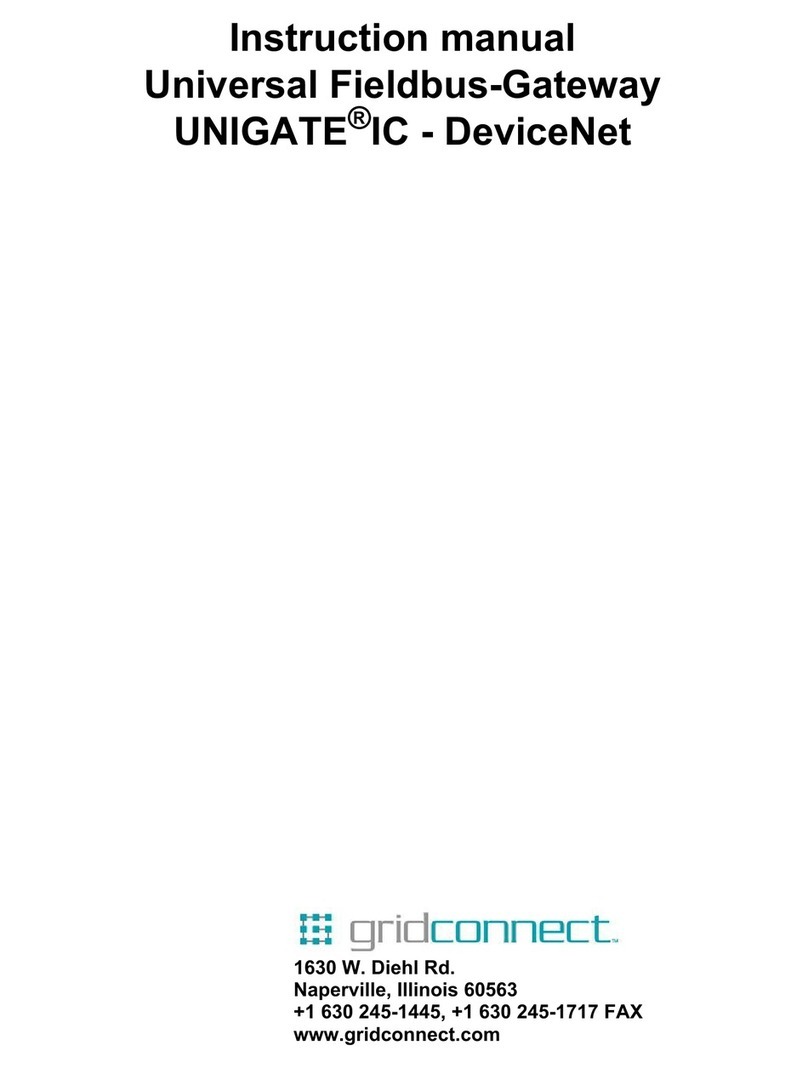
GridConnect
GridConnect DeviceNet UNIGATE IC instruction manual

STIEBEL ELTRON
STIEBEL ELTRON ISG quick start guide
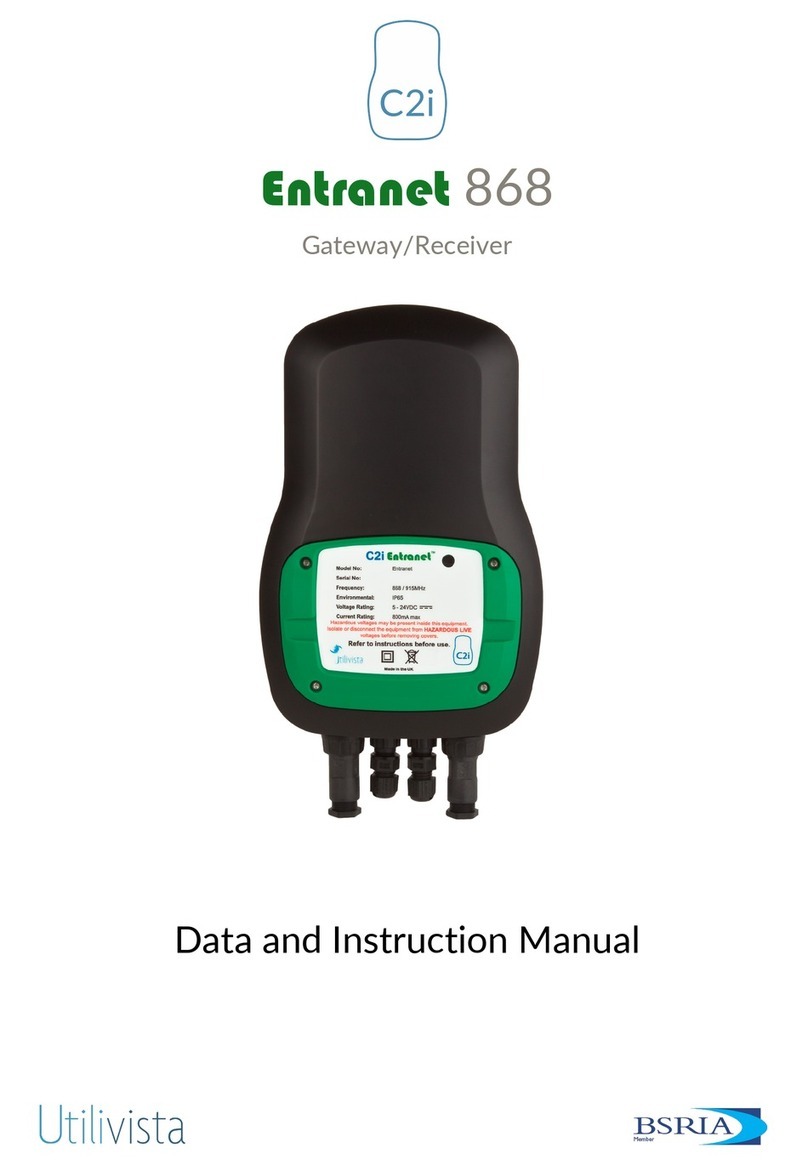
Utilivista
Utilivista Entranet 868 instruction manual
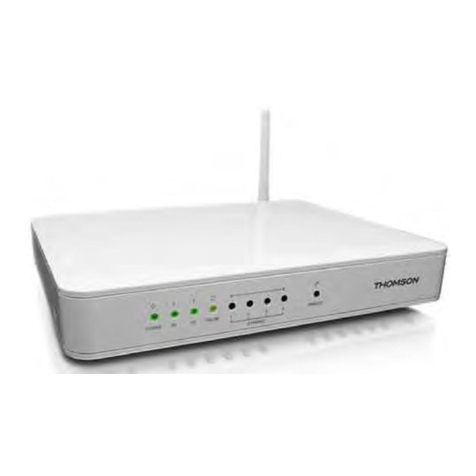
THOMSON
THOMSON TCW750-4 instruction manual
